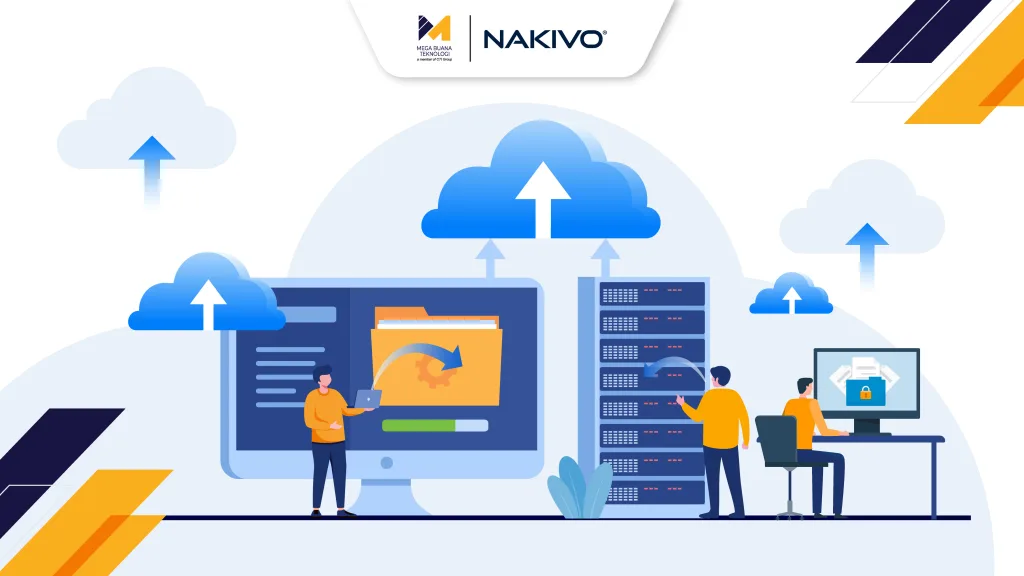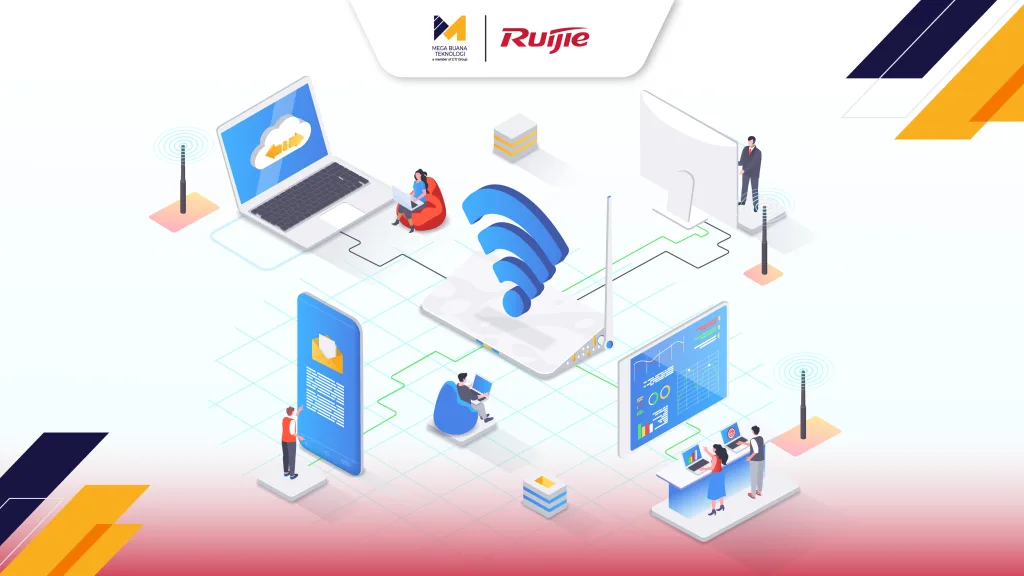With the increasing frequency of cyberattacks such as phishing, malware, and IoT device exploitation, data breach prevention is no longer a supplementary option—it is a business necessity. According to Gartner Emerging Risk Response Toolkit: Cybersecurity, the average cost of a data breach exceeds US$8.64 million per incident.
However, many organizations still neglect to implement essential protective measures such as data encryption, access control, and employee security training. In this article, we will explore the causes and best practices for effective data breach prevention in today’s business landscape.
What is Data Breach?
A data breach is a cybersecurity incident in which sensitive, confidential, or protected information is accessed, stolen, or exposed by unauthorized parties. This information may include personally identifiable data, financial records, login credentials, or strategic business information.
According to Forrester, data breaches can occur due to a variety of factors, including cyberattacks such as phishing, malware, ransomware, and social engineering, human error, system misconfigurations, software vulnerabilities, lack of audit and security. The consequences of a data breach can be highly detrimental ranging from financial losses and reputational damage to legal penalties resulting from regulatory non-compliance.
To mitigate the risk of data breaches, organizations should implement strategic safeguards, including encryption, multi-factor authentication, and regular network monitoring.
Common Causes and Sources of Data Breach
As incidents that enable unauthorized access and disclosure of sensitive information, data breaches can lead to significant financial harm and reputational loss. Based on insights from multiple sources, the following are some of the most common causes and origins of data breaches:
Human Error
PaySimple identifies human error as one of the leading causes of data breaches—examples include sending sensitive data to the wrong recipient or using weak passwords. Although unintentional, these mistakes can have a profound impact on business continuity.
Device Theft and Unauthorised Access
PeyProject highlights that the loss of unencrypted work devices such as laptops, tablets, mobile phones, or USB drives can become an entry point for data theft. This risk is especially prevalent in mobile, hybrid, or BYOD (Bring Your Own Device) environments that lack strict security policies.
Cyberattacks
Forrester reports that cyberattack such as phishing, malware, ransomware, and social engineering attacks are major contributors to data breaches. Cybercriminals exploit security system vulnerabilities and manipulate users to gain access to sensitive data and credentials.
Vulnerability Exploits
Organizations that continue to operate with unpatched software, outdated systems, or known security flaws are at increased risk of exploitation. Attackers often target these weaknesses to infiltrate internal networks undetected.
Insider Threats
In addition to external threats, internal actors—whether intentional or accidental—can also pose serious risks. Insider threats may involve current or former employees who retain access privileges and misuse them, resulting in unauthorized exposure of critical data.
What Can Hackers Do with Stolen Data?
Sensitive data stolen by hackers can serve as a gateway to a wide range of criminal activities, often resulting in significant consequences for the affected organization. Below are five potential uses of stolen data by cybercriminals:
- Hackers can impersonate victims by using personal information such as full names, addresses, national identification numbers, and birthdates to open fraudulent bank accounts, apply for loans, or commit tax fraud.
- With stolen usernames and passwords, hackers can gain access to victims’ email accounts, social media, and even business platforms. If a user reuses the same password across multiple accounts, this creates a gateway to their entire digital ecosystem.
- Cybercriminals may exploit sensitive data to blackmail victims, demanding ransom in exchange for keeping the information private or threatening to publicly disclose it.
- Hackers can craft convincing phishing campaigns or distribute malware by posing as trusted individuals. This enables them to further compromise personal or organizational data.
- Credit card details, bank account numbers, and other financial data can be used to conduct illegal transactions, steal funds, or be sold to third parties on the dark web.
12 Best Practise for Data Breach Prevention
Given the long-term impact of data breaches, it is essential for businesses to invest time and resources seriously to ensure such incidents do not occur. Below are 12 best practices to help prevent data breaches:
Multi-Factor Authentication (MFA)
Implementing MFA adds an extra layer of protection by requiring more than one method of verification before granting access. This approach helps prevent unauthorized access using stolen passwords alone.
Data Encryption
Encrypted data is unreadable and difficult to steal. It is critical to apply encryption to both data-in-transit (when being transferred) and data-at-rest (when stored).
Least Privilege Access
Provide data access only to employees who absolutely need it. The fewer people with access, the lower the risk of misuse or compromise.
Keep Software Updated
Regularly update and patch security systems to fix vulnerabilities that hackers could exploit.
Use Firewall and Antivirus Protections
Firewalls can block suspicious traffic, and antivirus software protects against malware that could serve as an entry point for data breaches.
Educate Employees about Cyber Threats
Human error remains one of the leading causes of data breaches. Conduct regular training on phishing, social engineering, and basic security practices to increase staff awareness and vigilance.
Secure Physical Devices
Use tracking systems, enforce device passwords, and enable remote locking options to prevent data theft or loss from laptops and mobile devices.
Use Secure Networks
Avoid using public Wi-Fi to access sensitive information. Instead, ensure a secure connection by using a Virtual Private Network (VPN).
Strong Password Policy
Enforce complex password requirements and regular changes to minimize the risk of breaches due to weak or compromised credentials.
Regular Data Backup
Back up data regularly to ensure quick recovery in the event of a breach or ransomware attack. Store backups in secure, isolated locations.
Conduct Regular Security Audit
Security audits help identify vulnerabilities, ensure policy compliance, and evaluate the effectiveness of your security systems.
Implement EDR and NDR Systems
Endpoint Detection and Response (EDR) and Network Detection and Response (NDR) systems allow real-time monitoring and response to suspicious activities across endpoints and networks.
Data Breach Prevention from EasiShare
EasiShare is an enterprise-level file security platform designed to prevent data breaches within your organization. With strict access controls, end-to-end encryption, and flexible user access management, EasiShare offers a robust solution to enhance security during both internal and external file sharing activities.
To proactively guard against data leaks, EasiShare is equipped with the following advanced security features:
OTP and One-Time Access Links
Users can share large files via secure links that are protected by two-factor authentication (2FA), expiration time limits, and download restrictions. These links are accessible only once, providing an additional layer of protection.
Granular Access Control and Admin Delegation
Administrators can assign specific access permissions (view, read, and edit) to individual users or groups. They can also delegate access management responsibilities to department heads or team leads for more efficient oversight.
Comprehensive Audit Trail
All file activities are logged in detail, enabling thorough tracking and audits to support security and compliance efforts.
Active Directory Integration
EasiShare seamlessly integrates with Active Directory to synchronize users and enforce consistent security policies across the organization.
EasiShare also simplifies employee access management through two key features:
- Periodic Access Review: Enables administrators to regularly review and ensure that only authorized users have access to sensitive data.
- Managed Folder Collaboration: Users can collaborate within folders governed by pre-set access permissions, ensuring that only authorized individuals can access specific folder content.
Preventing Data Breach with Oracle
Oracle offers a comprehensive database security solution that combines data encryption with real-time threat detection to prevent breaches. Utilizing a layered security approach designed to protect sensitive data throughout its lifecycle, Oracle integrates built-in security into its cloud architecture and employs a Zero Trust framework—ensuring that every data access attempt is verified to mitigate risks from both internal and external threats.
Oracle’s solutions detect anomalies and monitor activity in real time, providing proactive protection against cybersecurity threats. Organizations also benefit from risk reduction through stringent access controls, automated risk and compliance assessments, and flexible deployment across hybrid environments.
Oracle delivers a comprehensive suite of security solutions, including:
Oracle Data Safe
A cloud-based service that serves as a centralized control center for protecting databases across on-premises and cloud environments. This solution helps organizations identify and classify sensitive data using over 130 data types, assess configuration and user risks, and monitor user activity and security audits.
Oracle Audit Vault and Database Firewall (AVDF)
This solution collects and monitors audit data from a variety of sources, including operating systems and both Oracle and non-Oracle databases. AVDF identifies suspicious or unauthorized activities, provides comprehensive audit reports for regulatory compliance, and secures audit data through encryption and strict access controls.
Oracle Advanced Security
Offers Transparent Data Encryption (TDE) and data redaction features to protect sensitive data from unauthorized access—both in storage and during transmission.
Preventing Data Breach with MySQL
MySQL delivers a robust, integrated, multi-layered security solution designed to safeguard sensitive data at the database level. This includes access control, encryption, and compliance with data protection regulations. With ready-to-use advanced security features such as data masking, transparent encryption, and granular access control, MySQL is an ideal choice for protecting sensitive information across hybrid and on-premises environments.
Key advantages include automatic security patching to protect against the latest vulnerabilities without downtime, seamless integration with encryption key management systems like Oracle Key Vault, and compliance with global standards such as GDPR, HIPAA, PCI-DSS, Indonesia’s PDP Law, and SOC 2—ensuring your organization is audit- and regulation-ready.
MySQL implements six proven strategies to prevent data breaches:
1. General Security Issues
Follows a holistic security approach, covering system architecture and application configuration to prevent exploitation and misuse.
2. Access Control and Account Management
Implements role-based access controls, strict user account management, and granular authorization to prevent unauthorized access to critical data.
3. Encrypted Connections
Utilizes SSL/TLS to encrypt all connections between applications and databases, preventing data theft during transmission.
4. Security Components and Plugins
Provides additional security plugins such as password validation, audit logging, and integration with key management systems (KMS) to strengthen internal control mechanisms.
5. MySQL Enterprise Data Masking and De-Identification
Enables organizations to mask or de-identify sensitive data in development and testing environments, reducing the risk of exposing personal information.
6. MySQL Enterprise Encryption
Protects stored data with Transparent Data Encryption (TDE), which automatically secures data files without requiring application-level changes.
Find Out the Best Data Breach Prevention Solutions for Your Business with MBT
In today’s digital era, where cybersecurity threats continue to escalate, data breach prevention is a critical priority for every organization. EasiShare, Oracle, and MySQL offer powerful and secure solutions to help protect your sensitive business data.
Obtain these solutions today through Mega Buana Teknologi (MBT)—an official partner of EasiShare, Oracle, and MySQL. As a member of CTI Group, MBT delivers professional services backed by certified and experienced IT specialists to ensure smooth, error-free implementation.
With 24/7 IT support, MBT guarantees comprehensive assistance before, during, and after implementation, in accordance with global standards and industry best practices. Click the link below to begin your consultation and let our team help you fulfill your data breach prevention needs.
Author: Ervina Anggraini – Content Writer CTI Group




